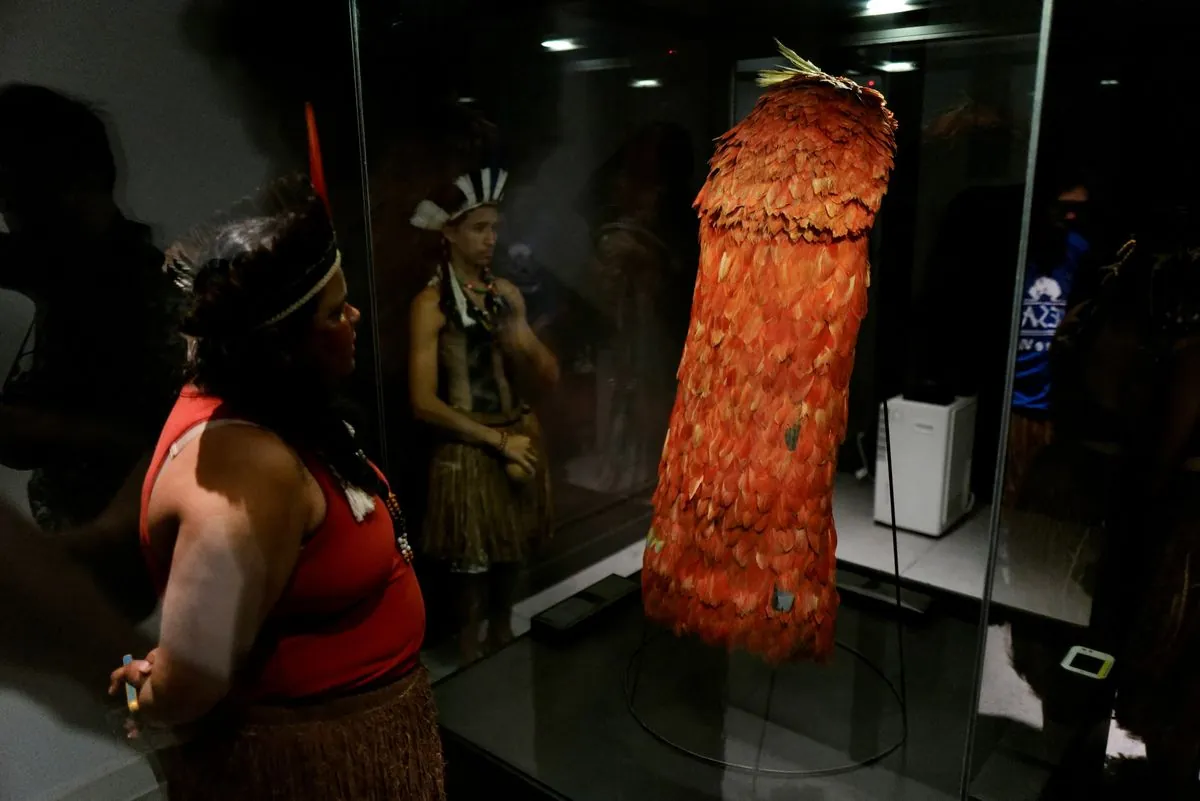Sacred Tupinamba Cloak Returns to Brazil After Centuries in Denmark
Brazil welcomes back a 17th-century Indigenous cloak, made with 4,000 scarlet ibis feathers, from Denmark. The ceremonial return marks a significant step in cultural heritage repatriation efforts.

In a significant event for Brazil's cultural heritage, a sacred Indigenous cloak has been returned to its homeland after centuries abroad. The ceremonial cape, crafted with 4,000 vibrant red feathers from the scarlet ibis, was formally received by Brazil on September 12, 2024, marking the end of its long journey from Denmark.
President Luiz Inacio Lula da Silva attended the repatriation ceremony outside Brazil's National Museum in Rio de Janeiro, underscoring the national importance of this event. The cloak's return is not just a material acquisition but a powerful symbol of cultural reclamation for the Tupinamba people of Bahia in northeastern Brazil.
The Tupinamba, one of the first indigenous groups encountered by European explorers in Brazil, are known for their rich cultural traditions, including the highly developed art of featherwork. This particular cloak, used in religious rituals, was taken during the Dutch occupation of northeastern Brazil, which lasted from 1630 to 1654.

The cloak's journey through time is a testament to the complex history of colonial-era artifacts. First mentioned in a Danish inventory in 1689, it is believed to have been removed from Brazil around 1639. For centuries, it resided in the ethnographic collection of Denmark's National Museum, the Nationalmuseet, one of Denmark's largest cultural history museums.
A turning point came in 2000 when the cloak was loaned for an exhibition in Sao Paulo. A Tupinamba leader, upon seeing the artifact, demanded its return, initiating a process that would take over two decades to complete. In 2023, after extensive diplomatic negotiations, the Danish museum announced its decision to donate the cloak to Brazil's National Museum.
The return ceremony was a momentous occasion, with approximately 170 Tupinamba traveling from southern Bahia to Rio de Janeiro to celebrate. Jamopoty Tupinamba, a cacique or chief, emphasized the importance of this repatriation, stating:
"It is crucial they return what isn't theirs and rightfully belongs to us. Our heritage strengthens our identity."
This event highlights the ongoing global conversation about the repatriation of cultural artifacts taken during colonial times. From the early 16th century, Indigenous cultural items were often taken to Europe as evidence of "new world discoveries," eventually finding their way into museums or private collections.
The significance of such artifacts is illustrated by their representation in European art. A fresco painted in 1674 on the ceiling of the Apollo Salon at the Palace of Versailles, once the center of French royal power, depicts America as a woman wearing a Tupinamba cloak as a headdress.
According to Gliceria Tupinamba, a cultural heritage activist, ten similar cloaks remain in European institutions across Italy, France, Belgium, Switzerland, and Denmark. The National Museum of Denmark still holds one large and three partial cloaks.
The return of this sacred cloak is more than a cultural victory; it's a step towards recognizing and protecting Indigenous rights in Brazil. As Gliceria Tupinamba noted, "Its return is a symbol of the protection of our cultural and land rights that are under threat today in Brazil."
This repatriation comes at a crucial time for Brazil's cultural institutions. In 2018, the National Museum of Brazil suffered a devastating fire, destroying many irreplaceable artifacts. The return of the Tupinamba cloak not only enriches the nation's cultural heritage but also contributes to the ongoing efforts to rebuild and preserve Brazil's historical treasures.
As museums worldwide face increasing pressure to return colonial-era artifacts, this event sets a precedent for future repatriations. It underscores the importance of recognizing the cultural significance of these items to their original communities and the role they play in preserving and strengthening Indigenous identities.


































